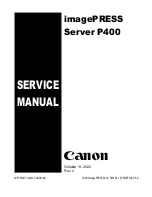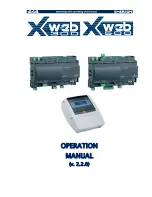
Appendix C: SAS/SATA RAID
C-1
Appendix C
SAS/SATA RAID
After all the hardware has been installed, you must fi rst confi gure SATA HostRAID
or SAS HostRAID before you install the Windows Operating System and other
software drivers. (The LSI SAS HostRAID is available for the X7DVL-3.)
Important Notes:
This chapter describes SATA RAID confi guration instructions for the Intel ESB2
Host RAID Controller for Windows. To confi gure the LSI SAS HostRAID for the
X7DVL-3, please refer to the LSI SAS HostRAID Utility (found at ftp://ftp.supermicro.
com/driver/SAS/LSI/LSI_SAS_EmbMRAID_SWUG.pdf). The LSI folder is included
in the CD-ROM that came with your motherboard. If you do not wish to confi gure
onboard SATA or SAS RAID functions, please go directly to Section C-2 and Appendix
D for the operating system & other software installation instructions.
C-1 Introduction to Serial ATA and Parallel ATA
To confi gure the SATA RAID functions, you must fi rst use the Intel ESB2 SATA
RAID Utility program to confi gure the RAID Level that you desire before installing
the Windows XP/2000/2003 operating system and other software drivers. (The
necessary drivers are all included on the Supermicro CD that came packaged with
your motherboard.) Note that the current version of the ESB2 SATA RAID Utility
can only support Windows XP/2000/2003 Operating Systems.
Serial ATA (SATA)
Serial ATA (SATA) is a physical storage interface that uses a single cable with a
minimum of four wires to create a point-to-point connection between devices. It
is a serial link, which supports transfer rates up to 3.0 Gbps. Because the serial
cables used in SATA are thinner than the traditional cables used in Parallel ATA
(PATA), SATA systems have better airfl ow and can be installed in smaller chassis.
In addition, the cables used in PATA are limited to a length of 40 cm, while Se-
rial ATA cables can be up to one meter in length. Overall, SATA provides better
functionality than PATA.
Introduction to the Intel ESB2 Serial RAID
Located in the South Bridge of the 5000V (Blackford-VS) chipset, the I/O Controller
Hub (ESB2) provides the I/O subsystem with access to the rest of the system. It
supports 1-channel UltraATA/100 Bus Master IDE controller (PATA) and six Serial
ATA (SATA) ports. The ESB2 supports the following PATA and SATA device con-
fi gurations: Legacy mode and Native mode.
Содержание SUPERSERVER 6015V-M3
Страница 1: ...SUPER SUPERSERVER 6015V M3 SUPERSERVER 6015V MT USER S MANUAL Revision 1 0b...
Страница 5: ...v Preface Notes...
Страница 10: ...x Notes SUPERSERVER 6015V M3 6015V MT User s Manual...
Страница 25: ...Chapter 2 Server Installation 2 9 Figure 2 4 Accessing the Inside of the SuperServer 6015V M3 6015V MT...
Страница 30: ...3 4 SUPERSERVER 6015V M3 6015V MT User s Manual Notes...
Страница 66: ...6 8 SUPERSERVER 6015V M3 6015V MT User s Manual Notes...
Страница 98: ...A 6 SUPERSERVER 6015V M3 6015V MT User s Manual Notes...
Страница 104: ...B 6 SUPERSERVER 6015V M3 6015V MT User s Manual Notes...
Страница 118: ...D 4 SUPERSERVER 6015V M3 6015V MT User s Manual Notes...
















































